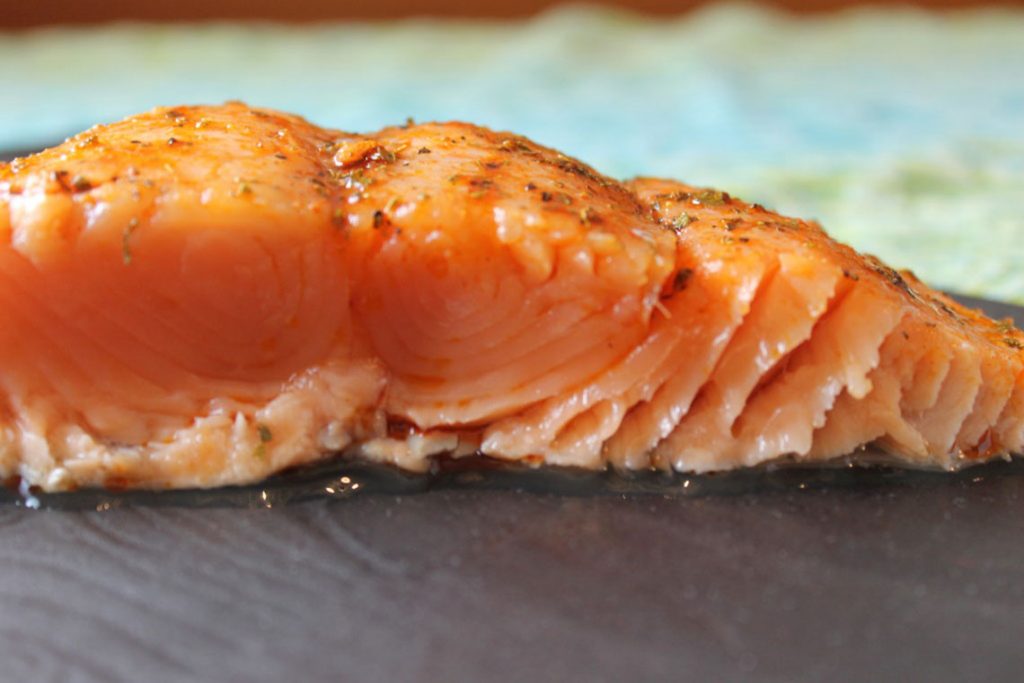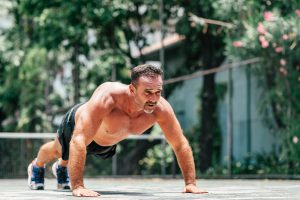

Being passionate about food and living in the Northwest of America is giving me many reasons to feel lucky. But one of the reasons that make me feel really privileged to live in this area is the proximity to one of the last great wild foods that are available to us in the world – the wild salmon.
Every year when May comes, I start to get excited. I know that it is a matter of days until the bright deep orange fish will appear all over town in fish markets.
Go Wild
Salmon for most people is the farmed version that is available all year-round. Consumption of farmed salmon has increased dramatically in the last decades and has long ago exceeded the consumption of wild salmon.
Until recently the industry of farmed salmon suffered a bad reputation and was accused of causing ocean pollution, spreading sea lice, producing contaminated fish and disease.
In the last decade, some improvements are slowly turning the industry into being more sustainable and producing a better fish.
Although it is a totally different fish, farmed salmon is a legitimate choice considering the fact that the wild fish can’t be available everywhere and all the time in a world of exploding population and endless demand.
Farmed salmon is still a highly nutritious good-quality fish as long as it is sourced from a sustainable, clean farm. So investigate and do your research.
Having said that, wild salmon is still the real deal. If you’ve tasted the wild fish once, you’ll never go back.
The flesh of the wild salmon is firmer, and the flavor is deeper and has much more complexity to it. The texture tells you the story of a long-distance, determined swimmer.
Looking at the nutritional profile of wild vs. farmed salmon also shows the superiority of the wild.
Wild salmon contains more important minerals and vitamins. Both fish are rich in omega-3 fatty acids, but the quality of fat in the farmed fish is questionable due to the lower nutritional quality of the food the fish itself eats.
Wild salmon nutrition includes krill, which is a small sea creature, plankton, and insects, the kind of nutrition that creates its high-quality, healthy-fat profile. As always, remember that you are not just what you eat, but also what your food eats.
Besides us, wild salmon is a life source to more than a hundred wild animals. We as customers have the power to create cleaner and healthier habitats for this amazing wild fish by voting with our forks and dollars.
Types of Wild Salmon
King salmon – The king of salmon can reach twenty pounds in weight. That’s because it stays in the sea for a longer time compared to other salmon species.
Since they spawn in deep, large, and fast-moving rivers, they have to store a lot of energy, which is what gives them the highest content of omega-3 fatty acids.
Sockeye salmon – The sockeye spawns in lakes and rivers and takes its time before migrating to the sea. It can spend up to three years in fresh water before migrating. The texture is firmer than king salmon, and the flesh has a deep orange color. It has less fat content but is no less of a culinary and nutritional treasure.
Coho salmon – has a medium fat content. An average coho is eight pounds, but some can get as big as thirty pounds. The flavor is milder than the King or Sockeye.
Chum – has the widest spawning population among the Pacific salmon species. They can be found in Korea, Japan, and even the northern regions of Russia.
Chum has the shortest migration period and therefore have a low-fat content compared to other species. Chum, also known as keta, is highly prized in Japan for its bright orange eggs or salmon roe we see in sushi places.
Pink salmon – The smallest and most abundant of the salmon species has the lowest content of fat since it has a very short migration time. Most of it is sold to canneries and some sold whole. The flesh is closer in texture and flavor to trout.
The Better Way to Get Fish Oil
Wild salmon is loaded with Omega-3 fatty acids. It is a true anti-inflammatory super food.
6 ounces of wild salmon contains 883 mg of EPA and 1,111 mg of DHA – the 2 important Omega 3 fatty acids.
In terms of pure dose taking a good quality fish oil supplement would seem like a better option (assuming that you eat salmon only for the fish oil in it) and you will have to eat a lot of fish daily to obtain the same amount of fatty acids. However, when it comes to nutrition, the nutrient content is just half of the picture. The other half is absorption.
Studies show that the absorption of DHA from fish is way higher than from a fish oil supplement. The configuration of fats in fish is more familiar to our body and therefore can be absorbed more efficiently. (1)
More than this, salmon contains additional important nutrients like vitamin D, selenium and more co-factors. Over-all as always with whole foods, we get the whole “package” when we eat salmon, with a whole profile of nutrients that support and complete the functions of each other.
Sacred Food
Salmon is a beautiful example of the respect indigenous people hold to their natural food sources.
For the Native American people of the NorthWest, salmon was considered to be extremely important as a life source physically and spiritually.
In Native American myth, salmon, like the buffalo, willingly gives itself as food to humans.
Salmon is the center for ceremonies celebrating the beginning of the fishing season. There are also many taboos and tribal rules regarding salmon, and it is a symbol of determination, renewal, and prosperity.
What’s the takeaway for us? In the cynical materialistic world we live in, where salmon, like many other foods, is commoditized, it’s easy to dismiss this behavior as childish folklore.
But foods like wild salmon connect us to our heritage as humans and reconnects us to the natural cycle we have been detaching our selves from for too long.
Wild salmon is more expensive than his farmed cousin, no doubt. But when you buy wild salmon, you buy a food that hasn’t changed for ages and is dense with nutrition that can only be the product of a fish fed by the open ocean and rivers.
Think about it the next time you buy some wild salmon as I hope you will. That beautiful piece of fish has gone a long way to get to your plate for the nourishing of your body and spirit.
The Simplest, Best Way to Cook Wild Salmon

Not much to do here. The ingredient has all the goodness to offer and the less you treat it, the better.
For 2 people buy about an ounce of fish. Take it out of the refrigerator 1 hour before cooking and preheat your oven to 400f.
Season the fish with good quality salt and fresh ground pepper.
In a small bowl, using a whisk, mix 1 tsp of smoked paprika, and 1 tsp oregano with 4 tbs of olive oil. Coat the fish well from all sides with the spiced oil and put it in a baking dish or metal-handled pan. If you want it even simpler you skip the spices and just use the olive oil. The spices, however, will give a very nice twist to the fish.
Now, this is the most important part: you want to bring the fish to a level of doneness of no more than medium. Much preferably medium rare. I like my fish to be almost rare throughout most of its inner layer. The difference between perfectly done, delicious piece of fish and a sad, dry fish can be one minute. So please, don’t overcook this precious ingredient.
A salmon fillet is usually about an inch thick and it requires 9-11 minutes to reach its right doneness level. Different ovens behave differently even in the same temperature – as weird as it sounds, my oven’s 400f is not necessarily the same as yours, so get to know your oven and play with it to know how to use it.
Hope you enjoy this!



